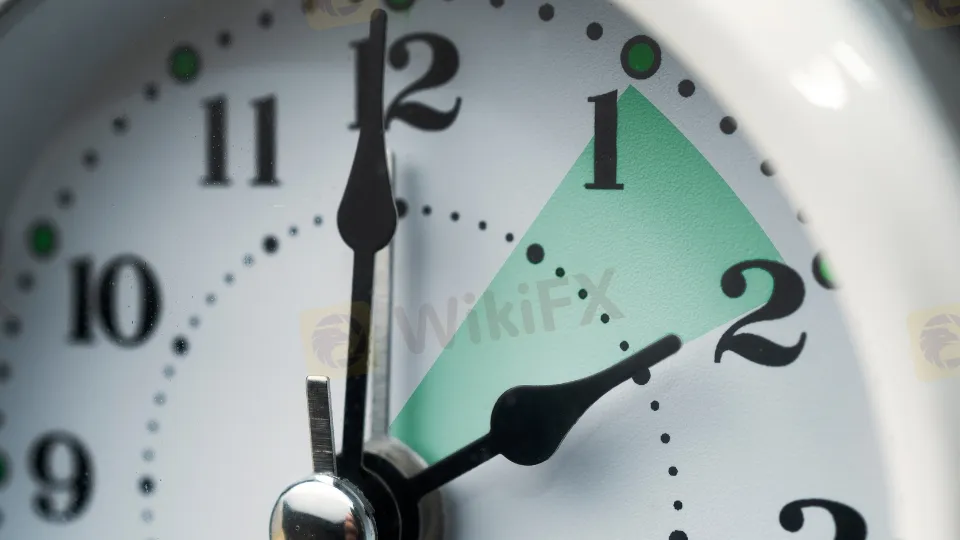What Time Does the Forex Market Open? A Beginner's Guide
Abstract:Forex trades 24/5 across Sydney, Tokyo, London, and New York. Learn exact open times, overlaps, and the best hours to trade by pair and strategy.

Introduction
The forex market operates 24 hours a day, five days a week, cycling through four major financial centers—Sydney, Tokyo, London, and New York—so the practical “open” depends on regional session times and a traders time zone. Rather than a single daily bell, liquidity and volatility rise and fall as each session begins and overlaps with the next, making timing central to pricing, spreads, and strategy performance for beginners. Knowing precisely when each session starts, where overlaps occur, and how daylight saving time (DST) shifts alter schedules can materially improve trade planning, risk management, and execution quality.
At a high level, the weekly cycle starts when the Sydney session opens Monday morning local time (Sunday evening UTC) and runs continuously until New York closes on Friday, with brief weekend closures and occasional holiday disruptions in specific centers that can thin liquidity and widen spreads. For new traders, the best first step is to anchor on UTC or a personal time zone, map the four sessions, and focus on the London session and the London–New York overlap, which typically offer the deepest liquidity and most consistent movement in major currency pairs.

Definition and Core Concepts
- Market structure: Forex is an over-the-counter (OTC) global network of banks, brokers, and electronic venues rather than a single central exchange, which enables 24/5 trading across time zones.
- Sessions: The major sessions are Sydney (Oceania), Tokyo (Asia), London (Europe), and New York (North America), each with characteristic liquidity profiles and active currency pairs.
- Liquidity and spreads: Liquidity tends to be highest during overlaps, improving order fills and often tightening spreads, while thin periods can see slippage and wider costs for market orders.
- DST impact: Session clocks shift when London and New York observe daylight saving time, changing the precise overlap windows relative to UTC and to regions that do not shift, such as most of Asia.
Why It Matters in Education
Understanding session timing teaches beginners when price discovery is most robust and when spreads are typically most efficient, which supports better execution and more reliable backtests aligned with real market rhythms. It also aids in setting realistic expectations for volatility by pair; for example, EUR/USD tends to move more during European and US hours, while AUD/JPY may be more active during Asia-Pacific sessions. Educators emphasize time-aware trading plans because inconsistent timing introduces avoidable noise in performance measurement and risk controls.

The Four Major Sessions (UTC Reference)
- Sydney: Approx. 21:00–06:00 UTC, opens the weekly trade on Monday morning local time (Sunday evening UTC), often with modest liquidity but a crucial read on weekend news gaps.
- Tokyo: Approx. 23:00–08:00 UTC, anchors Asias price action and sees greater activity in JPY and AUD pairs, with typical range development ahead of Europe.
- London: Approx. 07:00–16:00 UTC, the largest center by volume, where liquidity deepens and European data releases drive directional impulses in EUR, GBP, and CHF pairs.
- New York: Approx. 12:00–21:00 UTC, heavily influences USD pairs and hosts the most-watched macro releases, with volatility peaking during the London–New York overlap.
Note: Exact clock times vary with DST in the UK and US; beginners should verify the current offsets relative to UTC to avoid missed entries or misaligned news timing.
Session Overlaps and Why They Matter
- Tokyo–London overlap: Brief and generally less impactful than later overlaps, but can transmit Asia momentum into early European trading, especially on macro catalysts.
- London–New York overlap: Approximately 12:00–16:00 UTC, typically the days deepest liquidity window with frequent breakouts, larger ranges, and tighter spreads in major pairs.
- Sydney–Tokyo overlap: Supports Asia-Pacific activity, with AUD, NZD, and JPY pairs more responsive to regional data and central bank headlines.
What Time Does the Forex Market Open? (By Time Zone)
Because forex runs 24/5 across centers, the meaningful “open” is the weekly kickoff in Sydney and the daily opens of each regional session relative to local clocks and UTC anchors. As practical guides, beginners can map:
- Weekly open: Sunday 21:00–22:00 UTC window as Sydney liquidity starts to form, with spreads potentially wider during the earliest minutes.
- Daily opens: Sydney around 21:00 UTC, Tokyo around 23:00 UTC, London around 07:00 UTC, New York around 12:00 UTC, all subject to DST adjustments in the UK and US.
Best Hours to Trade by Pair
- EUR/USD, GBP/USD: London open through London–New York overlap for the strongest liquidity and news-driven trend development, with improved execution and reduced slippage risk.
- USD/JPY: Active in both Tokyo hours and the London–New York overlap, with Bank of Japan and US macro releases driving distinct intraday cycles.
- AUD/USD, NZD/USD: Most responsive during Sydney and Tokyo sessions, especially around Australian and New Zealand economic data and RBA/RBNZ communications.
- Crosses (e.g., EUR/GBP, EUR/JPY): Align with the intersection of their regions—Europe for EUR/GBP and Asia/Europe transitions for EUR/JPY—while noting liquidity improves when the dominant region is online.

Daylight Saving Time: Practical Adjustments
DST changes shift the relative positions of London and New York sessions against UTC and Asia, altering news release overlaps and volatility timing for several weeks each spring and autumn. Beginners should rely on an up-to-date session clock or an economic calendar that accounts for DST, and retime strategies and backtests when offsets change to preserve comparability.
News Releases and Volatility Windows
Major macro releases—US Nonfarm Payrolls, CPI, FOMC; UK CPI and BOE; Eurozone PMI/ECB; Japan Tankan and BOJ—cluster around local morning hours, amplifying volatility near opens and overlaps. Spreads may widen seconds around releases; pending orders can experience slippage, so plan entries, position sizes, and protective stops with the specific event time in mind.
- Spreads: Tightest when both liquidity providers and active counterparties are online, particularly during London and the London–New York overlap, and widest during late US afternoon and at the weekly open.
- Slippage: More likely in thin periods and during fast news; limit orders and stop-limit tools can reduce adverse fills but may miss in gap conditions.
- Rollover (swap): Typically processes at 17:00 New York time on trading days; positions held over rollover can incur financing costs or credits that vary by pair and broker.
Frameworks for Beginners
- Time anchoring: Choose UTC or local time and keep a fixed conversion table for each session and for DST on/off to avoid timing errors and inconsistent journaling.
- Session-specific playbooks: Define setups for Asia range development, London expansion, and New York continuation/reversal behavior, including preferred pairs and volatility filters.
- Overlap discipline: Restrict live trading to the London–New York overlap at first to learn in deeper liquidity with lower execution friction, then expand hours as confidence grows.
- News-awareness: Integrate an economic calendar into the daily routine with alerts 15–30 minutes pre- and post-release to manage spread widening and algorithmic bursts.
Case Study: London Open Momentum
A simple educational case study is to observe EUR/USD behavior from 06:30–09:30 UTC on a dozen trading days, tagging London open at 07:00 UTC and noting range breaks versus fakeouts. Students typically find that pre-London Asia ranges often give way to a directional push within the first 60–90 minutes, especially when European data hits, reinforcing the importance of session timing.
Risk Management and Timing
- Position sizing: Reduce size during thin liquidity or high-impact releases; scale to normal during overlaps when spreads and depth are more favorable.
- Stop placement: Account for session-average true range; London open hours may require wider initial stops than late US afternoon.
- Journaling: Record session, overlap status, and major events per trade to isolate timing effects on win rate and expectancy in post-trade reviews.

Common Mistakes to Avoid
- Ignoring DST and missing key releases due to shifted clocks, leading to mistimed entries and avoidable slippage on market orders.
- Trading illiquid windows out of convenience, which can inflate transaction costs and distort backtests compared to overlap performance.
- Overgeneralizing: Assuming all pairs behave similarly across sessions, rather than matching pairs to their most active regional hours.
Tools and Classroom Resources
- Session clocks: Use reliable session timers that automatically account for DST in London and New York and clearly display current overlaps.
- Economic calendars: Choose calendars that provide local time conversion, importance filters, and historical ranges to contextualize expected volatility.
- Data for practice: Build simple studies using minute bars across sessions to visualize spread behavior and typical range expansion from Asia to Europe to the US.
Final Insights
Forex does not have a single daily open; instead, trading transitions across Sydney, Tokyo, London, and New York with liquidity peaks at overlaps, especially London–New York. Beginners should align pairs and strategies to session characteristics, track DST, and concentrate practice during high-liquidity hours to improve execution and outcomes.

Read more

Forex Paper Trading Explained: Definition, Advantages and Disadvantages
Want to test yourself before taking a plunge with full-on forex trading? You need paper trading, which is also called Demo Trading. Derived from the stock market, the term ‘paper trading’ was practised by investors who wrote their investment ideas on paper and found out whether their ideas remained successful as the market moved. Be it short-term traders or long-term ones, they all hesitate when placing trades for the first time for the sheer concern of losing capital. This is where forex paper trading comes as a differentiator. In this article, we have shared details regarding its operational framework, advantages and disadvantages. Read on!

Gleneagle Review: AU Institutional Prime Brokerage
Australian institutional prime brokerage review of Gleneagle: leverage, custody, execution, and capital solutions under AFSL 337985 for wholesale investors.

Why Forex Trading? Top 10 Reasons to Start Now
Forex trading offers 24/5 access, high liquidity, and strategy flexibility for beginners—learn the top benefits, real risks, and how to start safely in 2025.

Trading While Traveling – Is It Possible? Digital Nomad Traders Are Making It Reality
The idea of making money online while exploring the world is no longer just a dream. Thanks to technology and global financial markets, more people are embracing trading while travelling as a way of life. These adventurous individuals, known as digital nomad traders, are combining work and wanderlust.
WikiFX Broker
Latest News
Trading While Traveling – Is It Possible? Digital Nomad Traders Are Making It Reality
The Offshore vs. Onshore Broker Dilemma: Who Can You Really Trust?
FBS Added AI tool for Rapid Forex Insights
Axiory Review Alert: What Traders Must Know
Do Content Creators Need a “License”? A Plain-English Guide to the Finfluencer Idea
XM Revamps Trading Platform with AI
Malaysia Investor Alert List is Out! Check the list to Avoid Scam
BotBro Chief Lavish Chaudhary to be Behind Bars Soon? Here’s the Inside Story!
Top Forex Regulatory Bodies You Need to Know
Think Your Broker is Safe? 5 Secrets Only WikiFX Can Uncover
Rate Calc

